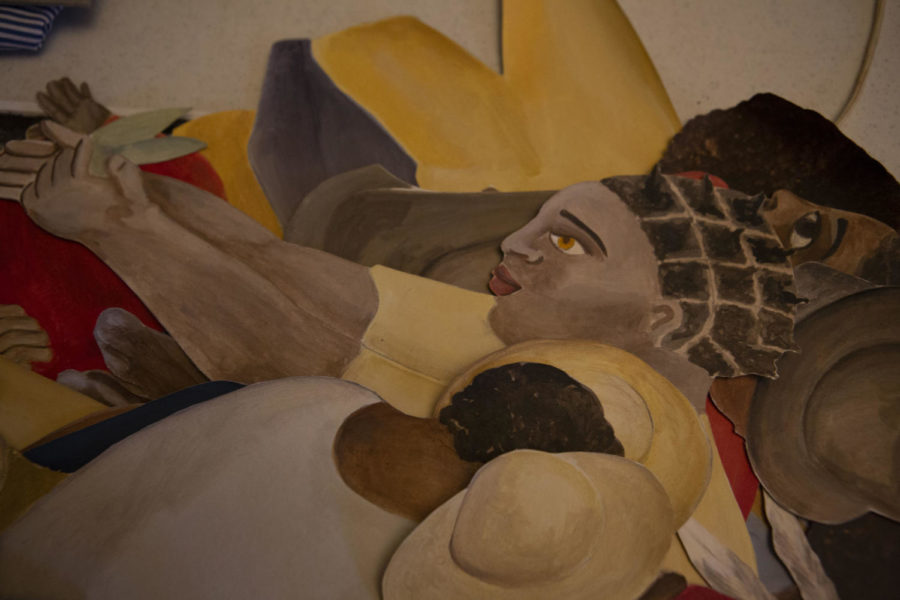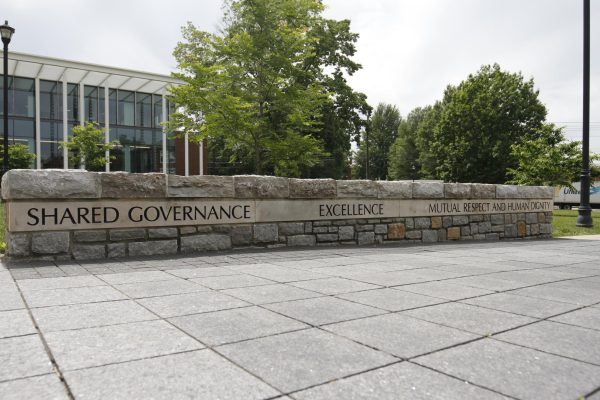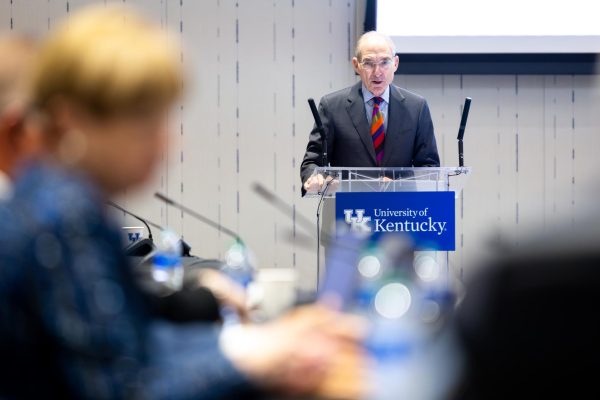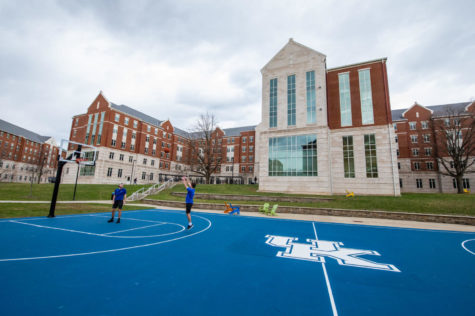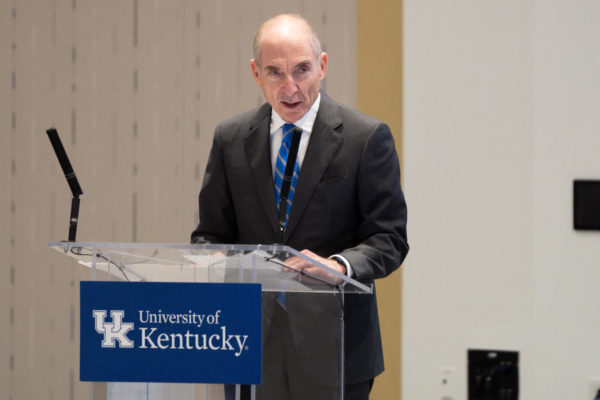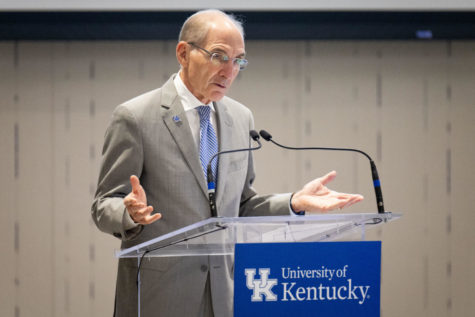Once anonymous, now revered: Memorial Hall art adds context to debate of race in art
August 16, 2018
A space once wrought with racial tension now demands reverence for the subjugated.
Karyn Olivier, the artist charged with assembling a complimentary art piece for the controversial mural in UK’s Memorial Hall, finished and opened “Witness” to the public on Thursday afternoon.
“Witness,” a gilded tribute to those who have been subjugated throughout American history, is about “taking the subjugated, folks who were considered lowly or insignificant, the people who were anonymous, who didn’t have names, and then elevating them to the level of divine,” Olivier said.
Anne Rice O’Hanlon’s 1934 mural, which occupies most of the wall space in Memorial Hall’s lobby, plunged the space into controversy in 2015, after a group of African-American students told UK President Eli Capilouto that the mural sanitizes the immorality and brutality of slavery.
As the mural is a fresco, removal was not an option. The mural has become part of the building and cannot be removed without destroying the artwork itself, said Stuart Horodner, the director of the UK Art Museum. The university looked for other options, and decided that a new piece of art to complement the mural would be best.
After a lengthy selection process, Olivier was chosen to create a piece that added greater context to the mural and continue the discussion around how race is represented in historical pieces of art.
“Witness”
A student passing through Memorial Hall’s large double-doored front entrance should gaze toward the ceiling in the first room they enter.
A golden chandelier hangs beneath a now-gilded vaulted ceiling where replicas of the Native- and African-American figures from the O’Hanlon mural are stationed above a quote from Frederick Douglass which reads: “There is not a man beneath the canopy of heaven, that does not know that slavery is wrong for him.”
The figures on a golden elevated ceiling are reminiscent of churches and other sacred paintings where the revered are held above the congregation on a bright gilded background, Olivier said.
Four large portraits of important but largely unknown Kentucky historical figures are painted on the walls just below the chandelier, Olivier said.
The portraits include Chief Red Bird, a Cherokee man who lived peacefully among white settlers until he was murdered; Georgia Davis Powers, the first African-American to serve in the Kentucky Senate; Peter Durrett, a former slave who became a preacher and founded First African Baptist Church in Lexington; and Charlotte Dupuy, a slave woman who filed a freedom suit in 1829 against her master, Henry Clay.
‘The role of art is not to resolve things.’
According to Olivier, her work is not about resolving the conflict that surrounds O’Hanlon’s mural, but rather she hopes to put the mural in a new context for future and better discussion.
“The role of art is not to resolve things. This piece is not about resolving anything,” Olivier said. “If my piece kind of like neatly packaged it up, then the conversation is done and the piece failed.
Olivier said her piece offers another entryway or “peep hole” into a new way to view the mural. Or, she offered that maybe her piece will serve as a wake-up call to those students who might not have been paying attention at all.
“All of sudden they see this and then say, ‘Wait a second!’” Olivier said. “And they’ll be investigating and studying (the mural), and (wondering) what does that mean about the legacy of our city? And what does it mean about Kentucky?”
“Recontextualize”
Oliver said she can’t say how her art piece fits into the context of Lexington’s relocation of statues honoring Confederate figures.
“If I lived here I think I’d be able to answer that,” said Olivier, who’s based in Philadelphia. But she said it’s always good to “recontextualize” older pieces of art.
Recontexualizing art, she said, means examining the effects of yesterday’s art on today’s culture and politics.
“When you go to a museum and you see work that’s from 40 years ago, 20 years ago, it’s being recontexualized because it’s now being shown in a contemporary context,” she said. “So now I have to think about that work in relationship to what it means for culturally and politically today.”
As for Confederate statues, Olivier feels they should exist but only in museums because “that’s the space that they belong, of course.”
Olivier said that she thinks the mural’s take on slavery is honestly somewhat forward-thinking for the early 1930’s world that it was created in.
“I think she was really progressive in the way she centered those black figures. She knew what she was doing, that was a central part,” Olivier said. “So in her way, in that time, she was being, I don’t want to say radical, but I think she knew what she was doing.”
With a work that over the years will probably be viewed by thousands of students in one of UK’s oldest buildings, Olivier hopes that she can put the mural “up against the present moment.”
“To me I feel the burden and the priviledge of being able to do this,” Olivier said. “This is real, you know?”









































































































































